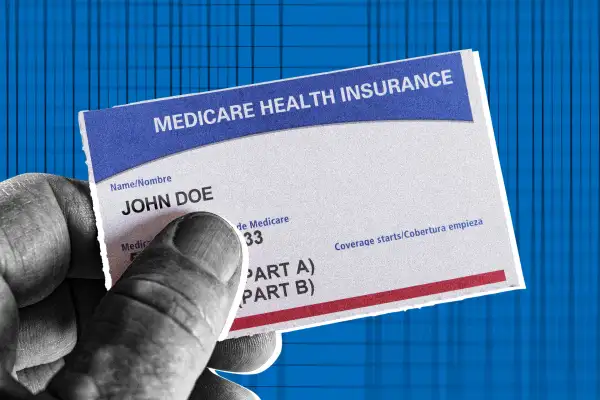Medicare Open Enrollment Is Here, and a Lot Is Changing in 2026

Medicare’s annual enrollment period is in full swing despite the federal government shutdown.
Nearly 70 million Americans who are enrolled in the federal health insurance program because of their age or qualifying disability can now make changes to their health insurance plans through Dec. 7.
This enrollment season in particular, experts are urging enrollees to pay careful attention to their health benefits due to several policy changes from both private insurers and the federal government.
“It’s really important for people to take a close look at the options available in their area,” says Gretchen Jacobson, vice president of Medicare policy at the nonprofit Commonwealth Fund, “Especially this year.”
According to the nonprofit health research organization KFF, about 70% of Medicare enrollees don’t compare their coverage options during open enrollment, although the group strongly encourages folks to do so.
“Medicare Advantage and Medicare prescription drug plans typically change from one year to the next and may vary in many ways,” KFF researchers wrote in a brief released Thursday.
On top of that, next year's premiums for traditional Medicare and prescription coverage are jumping higher than normal, and several major private insurers are paring down their Medicare Advantage Plans, a shift that is estimated to change coverage for at least 1 million Americans.
Here’s a closer look at what’s in store this open enrollment season.
Medicare open enrollment: changes for 2026
During this enrollment period, Medicare enrollees in Part A (for hospital insurance) and Part B (for medical insurance) can switch to private insurance plans that meet Medicare standards — known as Part C or Medicare Advantage Plans. They can also add or change their prescription drug benefits through Part D.
Likewise, people who are already enrolled in a Medicare Advantage Plan can switch back to traditional Medicare, or choose from dozens of other private Medicare Advantage Plans. Any changes will go into effect Jan. 1.
Traditional Medicare enrollees may want to brace for sticker shock. Premiums for Part B insurance are expected to jump by nearly 12% to $206.50, according to the Centers for Medicare & Medicaid Services, or CMS. Premiums for Part D may also rise.
The limit on out-of-pocket expenses on prescription drugs through Part D is rising to $2,100 next year, up from $2,000 currently. Jacobson notes that folks will have fewer Part D plans to choose from this year, across the board.
“We're seeing in every state that there are fewer standalone prescription drug plans available this year than last year,” she says, “and it's been fewer plans every year for the past several years.”
In general, folks who make no selections during open enrollment will be re-enrolled in their current plans.
However, that won’t be the case for a portion of people enrolled in Medicare Advantage Plans through Aetna, Humana and UnitedHealth.
Private insurers pull back on Medicare
Combined, those three largest private providers are reducing Medicare Advantage coverage in hundreds of counties and several states across the U.S.
An estimated 1.2 million Americans enrolled in Medicare Advantage plans may lose their current coverage as a result, according to Healthpilot, a Medicare plan marketplace. Insurance companies say that the retrenchment is due to a combination of funding cuts from the federal government, health care inflation and other financial constraints.
Those who are affected by the changes should have received an Annual Notice of Change in the mail by Sept. 30.
It’s not all bad news, though, according to Jacobson.
“There’s potentially a silver lining there,” she says, noting that people who lose their Medicare Advantage coverage have a unique opportunity to obtain Medigap coverage.
Medigap plans are available to those who are enrolled in traditional Medicare, and the plan works to supplement what isn’t covered by the government program. Usually, there are limited enrollment windows and medical underwriting restrictions that vary by state, making it confusing for enrollees to get Medigap coverage. However, federal rules relax those requirements when people get kicked off their private plans.
“It's one of the few time periods that are guaranteed by federal law where they would have the right to purchase a [Medigap] plan without underwriting,” Jacobson says.
Where to get help choosing Medicare coverage
Amid a flurry of changes this year, experts say it’s important to lean on the free assistance programs to make sense of it all.
One prime example: State Health Insurance Assistance Programs, or SHIPs. They are available nationwide and offer free advice for enrollees.
“Federally funded advisors are available in every state to provide one-on-one help,” Jacobson says.
Medicare.gov also offers a user-friendly coverage comparison tool, and the 1-800-Medicare hotline is available to offer advice and troubleshooting assistance as well.
Jacobson notes that Medicare.gov was updated before the government shutdown, and the hotline and SHIPs have funding to continue operations.
“Those resources should not be affected by the shutdown,” she says.
More from Money:
Can You Still Get a Free COVID Vaccine? Here's How to Find Out
Americans Spend $100 Billion Out-of-Pocket on Prescription Drugs. Things Could Get Worse

